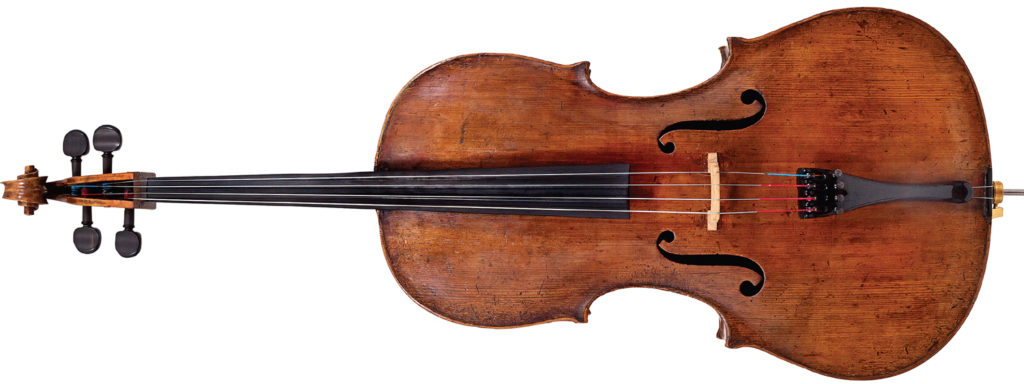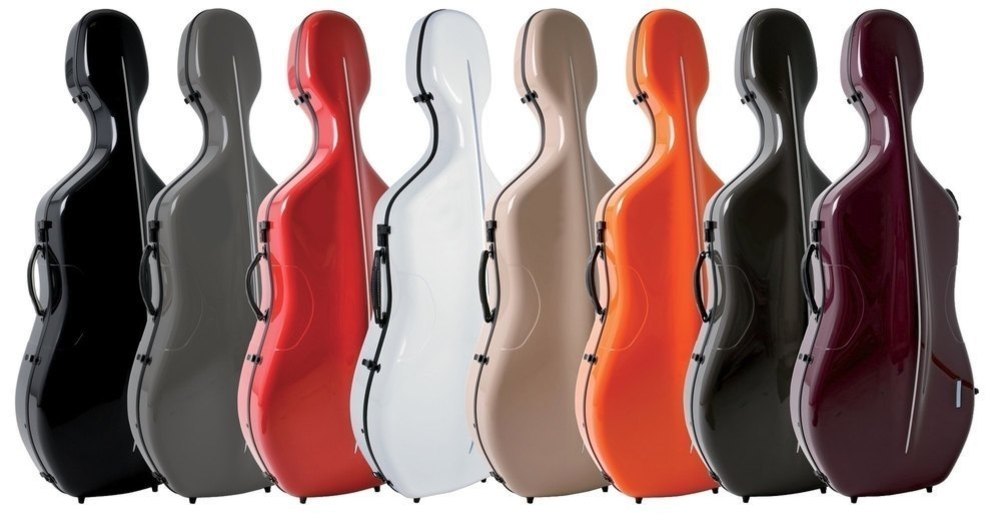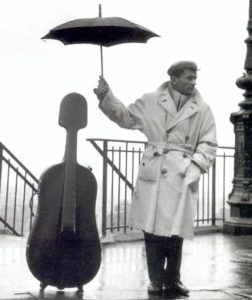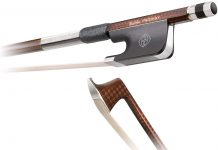Being a cellist is really fun and rewarding, and it also comes with great responsibility towards your instrument. Good cellos are not cheap and taking care of them so they stay many years with us is part of our tasks as musicians. So what can you do to make sure your cello is in perfect conditions always? Most of it is understanding what cello maintenance needs to be done on a regular basis. We’ll cover the basic cello maintenance procedures below so you will know how to take care of your cello.
How to Care for Your Cello Bow
Handle with Care
Cello bows are really delicate and need to be handled with care. Never leave them laying on any surface where it might get sat on or tipped over because they could scratch or break (well, if someone sits on it, it will definitely break!). Instead, every time you’re not using it, put it back in its case or on the hanger.
Never touch the hairs of the bow with your hands
The oils from the hands will cause the hears not to create the friction necessary with the string to produce a sound.
You don’t have to put rosin every single time you play
If you are just practicing and studying, two or three times per week is more than enough. If you are going to play in public though, it is recommended to use rosin before every performance.
Before using the bow, make sure to tighten the hairs
You want to make sure the hairs aren’t loose enough that the actual bow touches the string, but you also don’t want to tighten it so much the bow will curve the other way. If it reaches this point, you might need to replace the hairs of your bow.

Your Cello
Change Your Cello Strings
Cello strings are one of the most common parts of your cello that will need to be cared for. If you’re a student and are not frequently performing in concerts, you can change the strings when you see they are starting to break. If you do have tons of performances, it’s recommended that you change all of your strings once a year. You probably don’t want a string to snap on your face in front of a crowd.
Polish Your Cello
You should clean your cello at least once a week if you use it regularly. The way you can do this is by using a soft cloth that’s just a little damp. Make sure you don’t press too hard on the wood.
You should also check regularly the sound post
You can find it inside the cello – a wooden “stick” that’s held by the front and back part of the body. It’s important to make sure it’s set correctly and hasn’t fallen (which can happen!). Not having that support may cause the front part of the cello to collapse. You can check if it’s standing by just taking a peep through the F shaped holes.
Adjust Your Cello Bridge
The bridge of the cello is also something that with time, gets a little out of place. When you tune your cello, the tension of the strings can cause the bridge to tilt forward. This angle with the continuous tension of the strings can make the bridge snap. When you’re tuning the cello, make sure the bridge is not moving. To move it back to its original position, loosen the strings to make it easier to move.
Your cello bridge should be at a right angle to the body of your cello. You can compare the angle to a window frame to make sure it is a right angle or take it into a music shop.
Make sure your pegs move easily
The pegs of the cello can be some of the most frustrating parts of the cello. Depending on the weather or temperature, the pegs can be either stuck or too loose. Either way, it’s a pain to tune the cello (and keep it tuned). If it’s too loose, try pushing them in a little until they hold in the same place. If they are too tight, pull them out a little. You can also apply peg drops or peg dope to the pegs to make them move a little easier.
Clean Your Cello Strings and Bow
The strings of the cello are always in contact with the bow hairs and therefore, the rosin. Cleaning the strings is very important to maintain them crisp and help them last longer. You can clean them with a cloth after each time you play it. If the strings and bow are getting really dirt, you can add a bit of alcohol to the cloth to add some additional cleaning power. Make sure you don’t get ANY alcohol on the cello itself. The alcohol can eat the varnish.
Avoid Getting Scratches and Have Any Cracks Fixed Immediately
It’s not uncommon for your cello to get scratches. Especially if you use it a lot, transporting it from practice or performances will quickly add scratches even if you treat it carefully and put it in a protective hard case. Don’t worry too much if your cello gets these marks.
Obviously, you want to treat your cello with the utmost care, but be prepared to accept these marks. When your cello cracks, it’s a different story. If this happens, you want to take it to a luthier to fix it as quickly as possible. Don’t try to fix it yourself, as special glue and instruments are needed to handle the cello.

Transporting your Cello
The cello is a big instrument. There’s no way around it, and moving it around is not the most comfortable or the easiest thing to do. If you move a lot with your cello, it’s recommended that you get a hard case for your cello. It doesn’t have to be super expensive, but make sure it’s hard and can protect your cello. If not, and you want a soft case, make sure you can keep the cello out of harm’s way (a running child, pets… anything or anyone that can stumble across it and tip it over).
Protecting Your Cello from the Climate
The climate plays a HUGE factor in the good keeping of your cello. Because the cello is made out of wood, it responds to all natural elements. First of all, study the area you live in. Is it cold? Hot? Humid? Dry? Are there seasons? Here’s what you need to take into consideration depending on the climate:
Temperature
Depending on the temperature, you might want to store your cello somewhere. Really expensive cellos should not be taken outside in a casual way. Drastic changes in temperature can harm the wood of the cello and affect the way it sounds. If your cello is exposed to constant and extreme changes in temperature, make sure you have a well-padded case to protect it. If the weather is too extreme you can also store your cello in a climate-controlled room.
Humidity
Humidity plays the biggest factor of all. Wood expands or contracts depending on how humid it is. Some cellists put a humidifier (called a Dampit) inside the cello, through the F holes. You can also keep the instrument in a room with a humidifier. You’ll notice that depending on the humidity, the pegs will either be too loose or get stuck. That’s a good way to tell how the wood of the cello is responding to the conditions.

Taking care of your cello is not an easy task. It’s a delicate instrument and it’s not that easy to replace. Don’t be like Yo-Yo Ma, who left his cello in a cab in New Yor City and completely forgot about it… Luckily the taxi driver realized the cello was still in his car and went back to the hotel to return it. Not everyone will be this nice. And although not all cellos cost millions of dollars like Ma’s, they are still pretty pricey and should be handled with care and love.
Table of Contents






